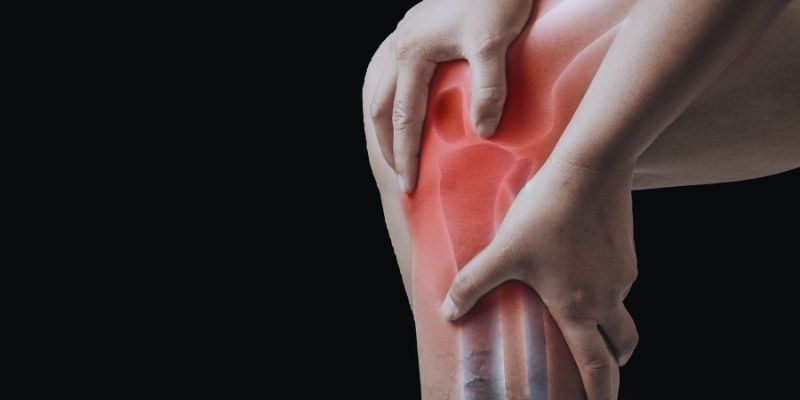Causes and Risk Factors of Paget's Disease: A Complete Understanding
Paget's disease is a less well-known but important disorder that influences the usual mechanism of bone remodeling. Although it usually passes unseen in its early phases, this condition can cause weaker, swollen, and misshaped bones over time. Knowing the causes, symptoms, and risk factors of Paget's disease is essential for persons over 50 or with a family history of bone-related problems.
This chronic illness can affect daily living through ongoing bone pain, joint stiffness, and a higher risk of fractures. With developments in diagnostic techniques, early identification is possible—even for asymptomatic people. This guide will offer insightful analysis of whether your goal is to identify its symptoms or learn about its triggers, thereby helping to control and avoid problems of Paget's illness.

What is Paget's disease?
Paget's disease is a chronic bone illness that affects how naturally occurring bone renewal proceeds. Healthy bones typically replace broken-down, old bone tissue with fresh bone. This process is aberrant in Paget's disease, producing weak, swollen, distorted bones. Typical afflicted sites include the pelvis, spine, skull, and long bones in the legs. Usually, symptoms include joint stiffness, ongoing bone pain, and a higher risk of fractures, which is the disorder. Some people, in the meantime, remain asymptomatic, and the condition is only found by bloodwork or imaging exams.
Although the precise origin of Paget's illness is yet unknown, genetic elements and probable viral infections are thought to have a part. More common in some cultures, particularly those with European heritage, it mostly affects persons over 50. Paget's illness is persistent, yet it can be controlled quite successfully. Treatment choices comprise lifestyle changes, medications to control bone remodeling, and physical therapy to reduce symptoms and avoid problems.
What are the Symptoms of Paget's Disease?
Paget's disease often develops slowly; many individuals may not experience noticeable symptoms. However, when symptoms occur, they commonly include bone pain, the most frequent complaint. The pain is dull and constant, often worsening at night or during rest. Affected bones may become deformed or enlarged, leading to noticeable changes in shape. For example, the legs may bow, or the skull may grow larger.
Weakened bones are more prone to fractures, even with minor injuries. Joint pain and stiffness can develop if the disease affects areas near joints, leading to osteoarthritis. Hearing loss may occur if the skull is involved, as enlarged bones can affect the inner ear. In advanced cases, nerve compression from deformed bones can cause tingling, numbness, or limb weakness. Though the afflicted bones will alter the symptoms, early identification, and treatment can help avoid major consequences and enhance quality of life.

Causes of Paget's Disease
Although the precise origin of Paget's disease is unknown, scientists think environmental and genetic elements cause it. Given the ailment usually runs in families, there is a significant genetic relationship. Abnormal bone remodeling has been linked to particular gene mutations, including SQSTM1—those with Paget's illness in their family run more danger. Environmental elements could also help to cause the illness. Certain research points to a possible relationship between Paget's disease and several viral illnesses, such as respiratory syncytial or measles.
These infections may lie latent in the body for years before starting the disease by upsetting the usual operation of bone cells. Among other risk factors are ethnicity and aging. Those of European background and those over 50 are more likely to have the condition. Geographic trends also point to possible influences from environmental exposure to some chemicals or nutritional deficits. Although the exact causes are unknown, knowing these elements facilitates early diagnosis and helps identify at-risk people.
Risk Factors of Paget's Disease
Several elements are raising Paget's disease risk. Among them are:
- Age: Those over 50 are more likely to have the ailment. The risk increases progressively with aging.
- Genetics: A family history of Paget's disease increases the risk of development. Like SQSTM1, mutations in particular genes are highly correlated with the condition.
- Ethnicity: Those with a European background—especially those from Western Europe or the United Kingdom—are more vulnerable. It is infrequent in populations of Asia and Africa.
- Geographic Location: The condition is more common in some areas, implying nutritional or environmental factors.
- Viral Infections: Some scientists believe that dormant viral infections like measles may induce aberrant bone remodeling.
- Gender: Men are somewhat more prone than women to get Paget's disease.
- Lifestyle Factors: A poor diet, especially one lacking calcium and vitamin D, can erode bones and raise susceptibility.
Diagnosis and Tests for Paget's Disease
Paget's disease diagnosis requires assessing symptoms, medical background, and particular tests. Important diagnostic tools consist of:
- Physical Examination: Doctors evaluate complaints, including sensitivity in afflicted areas, deformities, or bone pain.
- Medical History: A thorough family and personal medical history enables one to find genetic predispositions or linked diseases.
- X-rays: Often, the first test conducted is X-ray imaging. It exposes anomalies like fractures, malformations, or enlarged bones.
- Bone Scans: A bone scan identifies areas of great bone activity, pointing to disease-afflicted areas. One injectable radioactive tracer highlights active areas.
- Blood Tests: High alkaline phosphatase (ALP) levels in the blood can point to Paget's disease since this enzyme is generated during bone remodeling.
- CT or MRI Scans: Advanced imaging procedures like CT or MRI scans could help find issues, including fractures or nerve compression.
- Genetic Testing: Genetic tests can find mutations connected to the disorder in those with a family history.
Conclusion:
A chronic illness, Paget's disease can seriously impair the general quality of life and bone state. Effective care depends on early identification of symptoms, knowledge of risk factors, and fast diagnosis. Although the precise reason is unknown, environmental and genetic elements are important. People can control symptoms and avoid consequences through appropriate medical treatment, lifestyle changes, and pharmacological and physical therapy interventions. Increasing knowledge of this disorder is vital, especially for at-risk individuals. Keeping current will help you to be proactive in preserving your bone health and quality of life.












